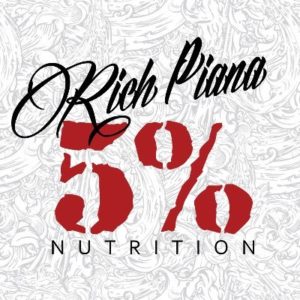
See all 5% Nutrition supplements
Over six years ago, we published our original article on one of the industry's most innovative amino acid supplements: Rich Piana's ALL DAY YOU MAY. This well-rounded amino acid formula took an entirely new spin on the category in multiple ways:
First, "ADYM" embraced the gym culture phenomenon of filling a milk jug with two gallons of water to sip throughout the day -- only now with amino acids on hand -- rather than attempting to replace the classic hydration practice. But even more importantly, Rich Piana and 5% Nutrition pioneered a Sweet Tea flavored amino acid supplement, which has been copied by countless brands ever since.
With these two innovations, along with Rich Piana's massive personality, ALL DAY YOU MAY quickly solidified legendary status. And now the tubs reflect that as well:

LEGENDARY Status: 5% Nutrition's All Day You May is moving to the white tub, but the formula is mostly unchanged. See how Rich Piana shattered the industry with this supplement, especially with that Southern Sweet Tea flavor!
The ALL DAY YOU MAY Legendary Series
If you haven't noticed, All Day You May now features a white tub -- this is part of the new Legendary look and branding from 5% Nutrition. This article has been updated to include new science and to reflect some of the very minor changes that the product has undergone over the years.
It's still true to the legend himself, Rich Piana, including endurance boosters, joint support, and even liver protection on top of the amino acids, but has had some improvements as well.
What is this legendary supplement and why should you sip on it ALL DAY long? We dig into ADYM below to see what it has to offer, but first, make sure to check our prices below for the best deal and sign up for PricePlow alerts:
Rich Piana 5% Nutrition ALL DAY YOU MAY – Deals and Price Drop Alerts
Get Price Alerts
No spam, no scams.
Disclosure: PricePlow relies on pricing from stores with which we have a business relationship. We work hard to keep pricing current, but you may find a better offer.
Posts are sponsored in part by the retailers and/or brands listed on this page.
Our ALL DAY YOU MAY REVIEW
As mentioned above, the Southern Sweet Tea flavor is INCREDIBLE!
See us review this insanely good flavor in the video below — skip to 7:30 if you want to check out the flavor portion:
ALL DAY YOU MAY Ingredients
Rich's latest supplement is aimed at growth and recovery from workouts. Specifically, it's being promoted to repair joints, reduce muscle fatigue, strengthen the immune system, protect your liver, and even improve digestion. Let's dig in, but first, it starts with the amino acids themselves:
-
Branched Chain Amino Acid (BCAA) Blend - 6,000 mg
Right off the bat, Rich serves up a hefty dose of branched-chain amino acids (BCAAs), which no intra or recovery product should be without. While not specified on the label, the 5% website notes that the BCAA ratio is 10:1:1 leucine:isoleucine:valine, meaning we get 5 grams of leucine, 500 milligrams of isoleucine, and 500 milligrams of valine.
When it comes to preserving muscle mass in the wake of extreme training, BCAAs are critically important, as they're anti-catabolic[1-3] and keep your body from ripping apart its own muscles when it needs these aminos to function. They also increase endurance.[4-6]
10:1:1 ratio? Bring in the leucine
Now why would Rich always want a massive 10:1:1 ratio front-loaded with leucine? Because Leucine is the main BCAA that activates mTOR, initiating muscle protein synthesis.[7-9] The other aminos are great, but leucine is the spark plug that gets things going.
There's much more to go, however.
-
Conditionally Essential Amino Acid Blend - 2,750 mg
Conditionally essential amino acids are ones that the body can make on its own, but in times of extreme duress or physical exertion (think 3RM squats), it can't synthesize enough to meet the body's demand. This is when supplementing becomes extremely beneficial.
L-Glutamine and L-Carnitine L-Tartrate make up this 2.8g blend, but we're not sure how much of each one.
Amongst these primary amino acids, the essential amino acids are in red. Leucine, Valine, and Isoleucine are the three Branched-Chain Amino Acids.
During tough workouts, the body uses a lot of glutamine -- it's the muscle's most abundant amino acid, which can lead to improved endurance in some users (as well as the rate of glycogen replenishment).[10,11] That may then lead to improved recovery and less soreness,[12] and we often discuss the gut health improvements that others see from it.[13]
Finally, glutamine is critical for the immune system's function.[14] While it's not the muscle builder it was once billed as, it is beneficial to sip on if you're banging at the weights day in, day out.
Also conditionally essential, L-Carnitine has been around the supplementation game for a long time and is crucial for several metabolic processes, since it helps the mitochondria transport fatty acids to the cell for use.[15]
This leads to numerous benefits -- including better performance,[16,17] endurance / fatigue prevention,[16-23] recovery,[24-27] and weight loss,[28,29] as shown with numerous types of L-carnitine. It's most beneficial to those who are deficient, either due to lack of red meat consumption or are simply hitting it so hard in the gym (or on the field) that they're depleted.[30-36]
5% Nutrition is using L-Carnitine L-Tartrate, a type that is bound to tartaric acid. We also call it LCLT, and one unique study with this form even showed that it increased testosterone levels,[37] although it was at 2 grams per day and we don't know how much of it is in All Day You May. We'd also love to see that study replicated.
The point is that we're extremely pro-carnitine, especially if you're not pounding the steaks and ground beef on a daily basis.
-
Amino Acid Support Blend - 960 mg
L-Taurine, Raw Coconut Water Concentrate, Alpha-Hydroxyisocaproic Acid (HICA), Bromelain, and Blueberry Fruit Powder comprise the Amino Acid Support Blend.
The man's legendary status would have persevered regardless, but 5% Nutrition is putting together some very sharp "legendary" white branding to keep it on point!
Just like carnitine above, we've become big believers in L-taurine, which we also consider to be conditionally essential - especially for athletes. Since All Day You May first came out, we've had a meta analysis showing how incredible taurine is for endurance -- and it works on the first use![38] There are numerous other benefits as well, including cognition[39] and cell volumization / hydration,[40] but that may depend on the dose.
Alpha-Hydroxyisocaproic Acid (HICA) is a metabolite of L-Leucine and is the catalyst for the mTOR pathway in the body that stimulates muscle protein synthesis. Additionally, HICA has been shown to increase lean muscle mass, speed recovery, decrease fat mass, and reduce soreness, albeit in larger doses.[41] This is one ingredient we don't see enough of, and love to have it paired with all that leucine.
Since ADYM launched, coconut water gained a lot more steam (coincidence?) in the fitness industry for its electrolyte-replenishing benefits.[42] We all know that sweating during exercise depletes the body of electrolytes, and maintaining adequate levels ensures that you can keep the muscles firing on all cylinders.
Bromelain is popular for its anti-inflammatory effects and can help reduce pain and inflammation.[43]
Finally, blueberry fruit powder has become a unique inclusion to several of 5% Nutrition's supplements, and it has vastly underrated effects in terms of increasing recovery and reducing muscle damage[44] while preventing damage to the DNA.[45-47]
-
Intra-Cellular Buffer Blend - 800 mg
Yet another blend awaits us in ALLDAY with the Intra-Cellular Buffer Blend consisting of endurance-boosting Beta-Alanine and some supporting electrolyte drivers.
Need more beta alanine if you're not drinking 4 scoops of ALL DAY all day? Then take KILL IT pre workout -- The Push Pop flavor is an unmistakable throwback to those orange & cream push pops from childhood!
First, realize that this alone won't be a big enough dose of beta alanine unless you're loading your jugs up with several scoops of ADYM (3.2 grams is the daily clinical dose). If you want to capitalize on its performance benefits, you'll need more throughout the day. Thankfully, it's well-dosed in all of Rich Piana's other pre workouts (Kill It, Kill It Reloaded, and 5150).
With that said, if you do get to that clinical dose, you'll be treated to increased endurance, as demonstrated by two well-performed meta analyses done on several subjects over time.[48,49] Beta alanine works by combining with L-Histidine to create more carnosine,[50,51] which then helps your muscle tissue buffer lactic acid, clearing the acidic environment and allowing them to last longer.
Second, and possibly more interesting is 5% Nutrition's inclusion of sodium bicarbonate (yes, baking soda!) in the formula. We're not sure why we don't see this more often, because sodium bicarbonate has very consistently been shown to boost endurance,[52] especially when combined with beta alanine![49] It works by also lowering acidity in the environment, so we're not sure if it overlaps with beta alanine's carnosine mechanism or is additive.
It'll add just a bit of pop and fizzle to the supplement as well, but not much since we'd probably need larger amounts for that.
Either way, with so much research on the subject, we'd expect to see more sodium bicarbonate in these endurance-minded supplements, but we never do. The road less traveled is clearly one that a Rich Piana brand takes.
-
Joint & Liver Support Blend - 650 mg
No doubt you've seen countless joint support formulas in the stores that are composed of glucosamine sulfate and methylsulfonylmethane (MSM). ALL DAY YOU MAY borrows two of those ingredients for its Joint Support Blend, and also adds milk thistle to the mix for liver protection.
"Beneficial to almost any age group, Joint Defender prides itself not only on quality but providing effective and immediate results."
There's a lot of research on glucosamine and MSM, but it's generally at larger doses with 1.5 grams per day in glucosamine[53-55] and 1 gram per day at MSM.[56-59] If you want more of these ingredients, which are "helpers" here in ADYM, you must check out the fantastically-dosed 5% Nutrition Joint Defender.
Your joints are going to take a beating if you are regularly hitting the weights. These two ingredients will help support and rebuild joints, tendons, and ligaments that will become gradually worn down from all the intense training.
Meanwhile, milk thistle has been added to the blend, and it's an ingredient also covered in depth in our article on 5% Nutrition's Post Gear for PCT support (it's also in Liver & Organ Defender if you're looking for on-cycle support). There are countless studies showing milk thistle's efficacy for liver protection, including a couple great meta-analyses.[60,61]
-
Essential Amino Acid Blend - 205mg
The Essential Amino Acid (EAA) blend consists of L-Phenylalanine, L-Threonine, L-Lysine, L-Histidine, L-Tryptophan, and L-Methionine. These are essential because the body can't produce them on its own (at least not in any meaningful way). They must be obtained through the diet or supplements, or else various biochemical and physical processes in your body simply won't operate correctly.
L-Methionine behaves like an antioxidant in the body by preventing the spread of free radicals and the ensuing oxidative damage that can be caused by intense training.
L-Phenylalanine is converted to tyrosine first, and then converted into epinephrine, norepinephrine, and dopamine (3 key neurotransmitters in the body) which can help improve energy, mood and focus.
L-Threonine is necessary for the production of serine and glycine to spark muscle protein synthesis.
L-Lysine is important for collagen formation, and like leucine, is a non-glucogenic amino acid.
L-Histidine serves many important functions in the body, strengthening the immune system and synthesizing hemoglobin, as well as combining with our beta alanine to form endurance-boosting carnosine.
L-Tryptophan assists with serotonin production, and is critical for mood support.
While these aren't massively dosed, they're true to Rich Piana's original vision of the supplement - and guess who was adding EAAs long before other brands were. The Legend.
The other three essential amino acids, of course, are the BCAAs, which are efficaciously dosed at the top.
Dosing: Do it the real man's way
Mix a one scoop serving of ALLDAYYOUMAY with 12 to 16 ounces of water and consume in between meals, right before a workout, during a workout, and after a workout.
The real recommended dosing for this product, however, is to place 4 scoops in a gallon of water, mix well, and sip on throughout the day.
Flavors Available

Only available for a limited time, so jump on it quickly - Starry Burst ALL DAY YOU MAY!
Wrap Up: Another legendary Rich Piana supplement

Heil to the true king of sports nutrition, and to 5% Nutrition for keeping ALL DAY YOU MAY as close to the legendary classic as possible!
Every time we drink a sweet tea flavored supplement that's not named ALL DAY YOU MAY, a part of us laughs inside, because of one simple fact: Rich Piana did it first. There's a phrase that goes "often imitated, never duplicated" -- and while that's exactly the case in the amino acid industry, it's not the case when it comes to Rich's persona. So much bigger than life, the man can never be duplicated, and nobody even bothers trying.
Rich's long-standing fans are treated with a legendary "BCAA-plus" amino acid supplement that, when used properly -- as in the gallon milk jug -- has tons of ingredients to help get you through a brutal day.
Like we said in our recent KILL IT Push Pop article, while we endorse fully disclosed supplements, when it comes to Rich's original formulations, we'd be upset if they changed too much. Some things just get taken to the grave, but this supplement should last forever. All Life You May, if you will.
Rich Piana 5% Nutrition ALL DAY YOU MAY – Deals and Price Drop Alerts
Get Price Alerts
No spam, no scams.
Disclosure: PricePlow relies on pricing from stores with which we have a business relationship. We work hard to keep pricing current, but you may find a better offer.
Posts are sponsored in part by the retailers and/or brands listed on this page.
Note: This article was originally published on published on May 12, 2015 and has been updated in 2021 for the new Legendary update.
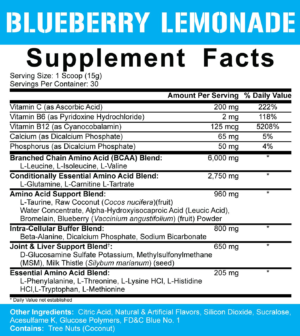
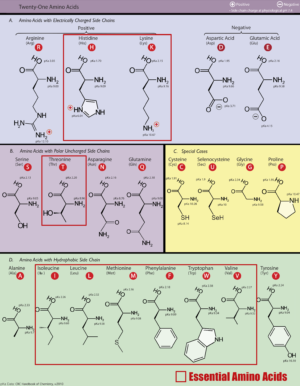


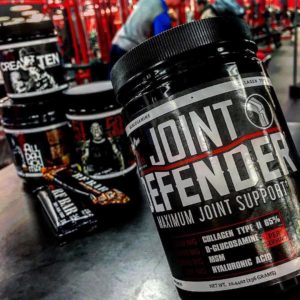
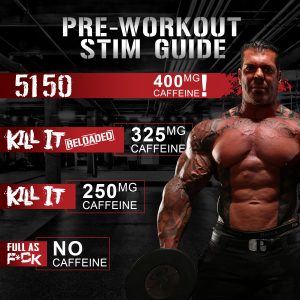


Comments and Discussion (Powered by the PricePlow Forum)